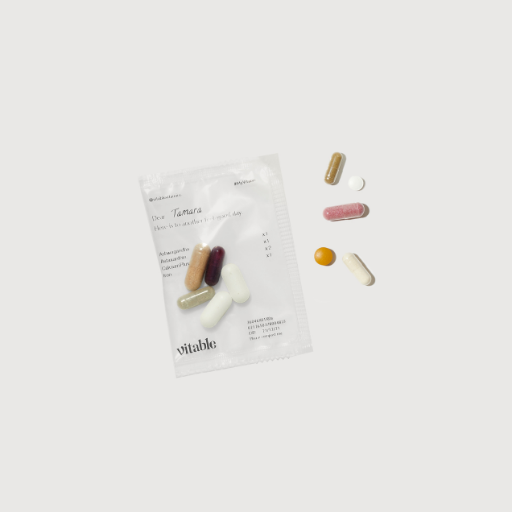What is runner’s knee? How to prevent joint pain while running


What is runner’s knee? How to prevent joint pain while running
Running is one of the most popular physical activities favored by Australians. It’s simple, effective at burning calories and maintaining overall fitness and gives many people a chance to enjoy the outdoors. However, the exercise does not come without consequences. Regular running can put repeated stress on the knee joint and over time, this wear and tear can result in a joint condition aptly termed runner’s knee. Without realizing it, you may have already dealt with runner’s knee symptoms in the past and may now be asking yourself, what is runner’s knee, exactly?
This article answers the question by providing information on the common condition afflicting running aficionados, regardless of level of expertise. It can be a difficult condition to treat if not addressed properly and in a timely manner, so for all those hoping to keep running as their regular exercise, read on.
The basics of runner’s knee
Runner’s knee is more formally known as patellofemoral pain syndrome (PFPS). It is a condition marked by pain under or around the patella or kneecap, the point where the knee connects with the lower end of the thigh bone. Those who have suffered from runner’s knee symptoms have described the pain as a dull and persistent ache in the affected knee that is not relieved by rest mid-exercise or going on prolonged running breaks. Other runner’s knee symptoms include feeling stress while bending the joint, cracking or popping sounds at the kneecap, and discomfort after sitting with bent knees (1).
Causes of runner’s knee
Getting the answers to the question of what is runner’s knee could lead to further inquiries about what causes the joint condition especially for those that have running as their main form of exercise.
The exact cause of runner’s knee has yet to be determined, although several factors may make a person more susceptible to developing the condition. Joint overuse is a leading factor as mentioned above; exercises that make the knees work harder than usual, such as running, jumping, squatting, or lunging, are the top contributors to this (1). Runner’s knee can also occur because of structural defects that result in muscle imbalances or weaknesses; there are some people who may have simply been born with congenital defects that have affected their knees or legs (1). It also could be caused due to the natural development of the muscles or bones in this area to result in muscle imbalances (1). Finally, individuals who have sustained a previous knee injury or have undergone knee surgery are also at risk of developing runner’s knee. These knees are less resilient to physical stress and able to handle some forms of exercise, so should be taken care of.
While anyone can develop runner’s knee, the condition tends to occur more frequently in females and in fact, women are twice as likely as men to be diagnosed with runner’s knee (1). The common condition is also not exclusive to runners as its name would suggest, but can affect anyone who do vigorous exercise regularly (1).

What is runner’s knee and what can I do to alleviate runner’s knee symptoms?
For minor cases of runner’s knee symptoms that most frequently manifest as pain, the best course of action is rest. Give your knees time to recover and put off running in the meantime.
The RICE method of rest, ice, compression, and elevation is useful for runner’s knee.¹ Refrain from putting any weight on the knee and apply cold packs for 15 minutes at a time several times throughout the day on the affected knee or knees. You can also wrap a compression bandage around the knee joint, making sure to leave an opening over the kneecap. Lastly, for elevation, rest with the knee elevated on a surface that is higher than your heart (1).
However, if you find that your runner’s knee symptoms are not responding well or at all to home remedies, it’s best to get help from a doctor. Medical attention for persistent or worsening cases is necessary because further injury may occur.
At the doctor’s office, you may be asked to do diagnostic imaging tests to ascertain the damage and rule out other causes of suspected runner’s knee. Other joint or muscle issues may be misdiagnosed as runner’s knee, so it is important to get an accurate account of what is causing pain or discomfort in your knees.
What is runner’s knee and how is it treated?
Depending on results on the kinds of tests your doctor will recommend you undergo, treatment plans will vary.
A treatment plan may include pain medications to help you manage runner’s knee symptoms. Always purchase pain medication prescribed by a doctor and take only the recommended dosage. Do not self-medicate. If you feel that the kind of medication or dosage is not right for you, consult with your doctor before making any changes.
Physical therapy is another regular component of a treatment plan for runner’s knee symptoms (2). During physical therapy, a licensed physical therapist will demonstrate specific exercises to strengthen the knee during a session, and can sometimes also teach you how to do these exercises on your own if necessary. Physical therapy helps you achieve regular and controlled movement in targeted muscle areas which can help you regain strength, endurance, and range of motion in the knee. For those who wish to keep their exercise regimen despite the risk of runner’s knee, your physical therapist can also spot and correct errors in your form and technique, and dispense useful advice to prevent re-injury.
In some cases, your doctor may further consider orthotics. Orthotics are shoe inserts that can help improve foot and ankle alignment. When your lower extremities are better aligned, it can take some stress off the knee. Orthotic devices can be bought off-the-shelf or customized to the contours of your feet. Make sure to talk with your doctor about the appropriateness of this option.
What is runner’s knee and what supplements can I take to strengthen knee joints?

In addition to working with doctors and therapists, you may also want to consider taking vitamin and mineral supplements as a preventive measure against runner’s knee symptoms and for improving overall joint health. Supplements can optimize the effects of your healthy choices and provide your joints with added stability and strength. These are the supplements you may want to look out for:
Vitamin C
Vitamin C or ascorbic acid is a water-soluble nutrient. While it is best known for its beneficial effects on the immune system, vitamin C can also support joint and cartilage health through its role in collagen synthesis. Collagen is the building block of bones, muscles, tendons, and cartilage. It accounts for about 60% of cartilage, a connective tissue coating the joints, including your knees (3). The cartilage plays an important role as a shock absorber during movement, so a breakdown in collagen could result in joint problems down the line. Vitamin C also contributes to connective tissue health and healing of connective tissue injuries that can occur during exercise such as running.
Vitable Australia’s Vitamin C Plus is paired with rosehip extract for an antioxidant-rich blend. Our supplement is specially formulated to support not only collagen formation but also immune system function, energy levels, and brain function.
Fish oil
Fish oil are oils derived from the tissue of fatty fish like salmon, mackerel, and herring. These oils contain omega-3, a type of polyunsaturated fat that reduces the risk of cardiovascular disease and stroke as fish oils have powerful anti-inflammatory effects (4).
A study suggests that fish oil may have the potential to relieve knee pain caused by osteoarthritis (4). In vitro studies indicate that fish oil decreases inflammation-induced destruction of tissue in cartilage harvested during surgery. Moreover, it has the potential to ease knee pain by improving microvascular function (4).
Vitable’s fish oil supplement is a concentrated blend of naturally derived omega-3-fatty acids that exerts anti-inflammatory effects.
Cranberry
While cranberries are traditionally used to treat other conditions unrelated to runner’s knee symptoms, their high Vitamin C content makes them candidates in maintaining cartilage, bone, and connective tissue strength and formation. More so, a study has suggested that cranberry juice decreases disease activity in female patients with osteoarthritis, although the exact mechanism has yet to be determined (5).
Curcumin
Curcumin is the active component of turmeric. Aside from giving flavour to food or drink, curcumin has potent anti-inflammatory effects. It suppresses inflammation through several mechanisms, making curcumin an ideal supplement for improving mild joint pain and reducing swelling healthily and quickly.
At Vitable, our curcumin supplement is blended with black pepper to enhance body absorption and ease joint pain and swelling.
Now that you are more informed about runner’s knee, its causes and prevention, you are in a much better position to take action and prevent knee pain. If you’re looking for supplements to improve joint health, consider Vitable. We offer a monthly vitamin subscription where you can mix and match our daily vitamin packs depending on your needs and health goals. We even take care of vitamin delivery for your ultimate convenience. Browse through our offerings today and invest only in the supplements you need to ensure that you live healthily and happily beginning today.
*Always read the label. Follow the directions for use. If symptoms persist, talk to your health professional. Vitamin and/or mineral supplements should not replace a balanced diet.
References:
- Mayo Clinic. Patellofemoral pain syndrome. https://www.mayoclinic.org/diseases-conditions/patellofemoral-pain-syndrome/symptoms-causes/syc-20350792
- Cleveland Clinic. Patellofemoral Pain Syndrome (PFPS). https://my.clevelandclinic.org/health/diseases/17914-patellofemoral-pain-syndrome-pfps
- Harvard School of Public Health. Collagen. https://www.hsph.harvard.edu/nutritionsource/collagen/
- National Institute of Health. (2020). Fish oil supplementation reduces osteoarthritis-specific pain in older adults with overweight/obesity. https://www.ncbi.nlm.nih.gov/pmc/articles/PMC7494084/
- National Library of Medicine. (2018). Cranberry juice decreases disease activity in women with rheumatoid arthritis. https://pubmed.ncbi.nlm.nih.gov/30553231/